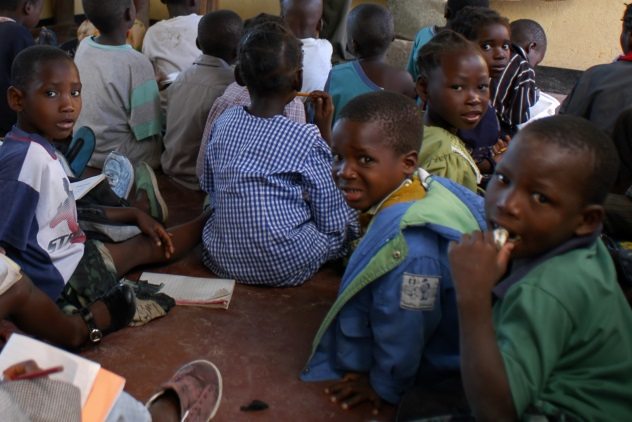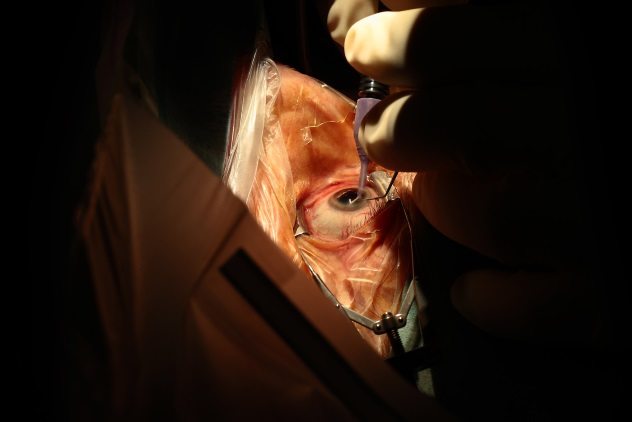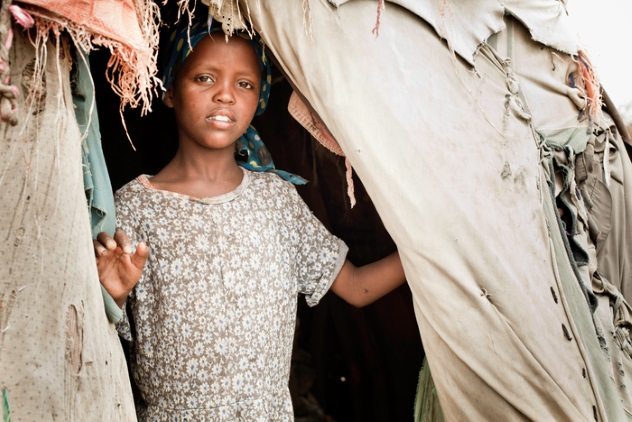 Music
Music  Music
Music  History
History 10 Less Than Jolly Events That Occurred on December 25
 Weird Stuff
Weird Stuff 10 Funny Ways That Researchers Overthink Christmas
 Politics
Politics 10 Political Scandals That Sent Crowds Into the Streets
 Weird Stuff
Weird Stuff Ten Bizarre Facts About The Doge Meme
 Our World
Our World 10 Ways Your Christmas Tree Is More Lit Than You Think
 Movies and TV
Movies and TV The 10 Coolest Stars to Set Sail on The Love Boat
 History
History 10 Things You Didn’t Know About the American National Anthem
 Technology
Technology Top 10 Everyday Tech Buzzwords That Hide a Darker Past
 Humans
Humans 10 Everyday Human Behaviors That Are Actually Survival Instincts
 Music
Music 10 Surprising Origin Stories of Your Favorite Holiday Songs
 History
History 10 Less Than Jolly Events That Occurred on December 25
 Weird Stuff
Weird Stuff 10 Funny Ways That Researchers Overthink Christmas
Who's Behind Listverse?

Jamie Frater
Head Editor
Jamie founded Listverse due to an insatiable desire to share fascinating, obscure, and bizarre facts. He has been a guest speaker on numerous national radio and television stations and is a five time published author.
More About Us Politics
Politics 10 Political Scandals That Sent Crowds Into the Streets
 Weird Stuff
Weird Stuff Ten Bizarre Facts About The Doge Meme
 Our World
Our World 10 Ways Your Christmas Tree Is More Lit Than You Think
 Movies and TV
Movies and TV The 10 Coolest Stars to Set Sail on The Love Boat
 History
History 10 Things You Didn’t Know About the American National Anthem
 Technology
Technology Top 10 Everyday Tech Buzzwords That Hide a Darker Past
 Humans
Humans 10 Everyday Human Behaviors That Are Actually Survival Instincts
10 Terrifying Tales Of Organ Trafficking
Most organs are a necessity, if not to live, then to at least have a high quality of life. Major advancements have been made in lab-grown organs,[1] but for now, we still need to rely on donors to meet our transplantation needs. Unfortunately, all across the world, demand exceeds supply by far, and this is where the black market steps in.
Unregulated and unaccountable, those selling organs on the black market aren’t always that fussy about where the organs come from or how they were acquired. Nor do they particularly care what happened to the donor. Below are just a few examples of some of the most terrifying tales from the organ black market.
10 Mozambique Ring

In 2004, sisters of the Brazilian mission Servants of Mary Immaculate in Mozambique reported that they had uncovered a large organ trafficking ring operating in the area. The nuns claimed that they had spoken to victims who had escaped the ring, who showed them evidence of murdered children with missing organs. The nuns said that in addition to selling organs for transplants, the traffickers sold the children’s reproductive organs for use as magical charms.
Soon after the nuns made their claims public, Sister Doraci Edinger was found beaten and strangled to death in her home. Other nuns reported that their families had started receiving death threats, with one by the name of Maria Elilda dos Santos being forced to flee the country.[2] An investigation was launched, but police said they found no evidence of such a ring, which the nuns claimed was due to a government cover-up. In 2016, they relaunched their appeal for an investigation, but no action has been taken.
9 Kosovo Liberation Army

In her 2009 autobiography, former Hague prosecutor Carla del Ponte alleged that dozens of Serb prisoners were taken captive by the Kosovo Liberation Army and taken to a farmhouse, dubbed the Yellow House, to have their organs trafficked.[3] She claimed that this occurred between June 1999 and May 2000, just at the end of and directly after the Kosovo War.
Three separate investigations were launched, and the EU ultimately concluded that it had “compelling evidence” that at least ten people had their organs trafficked from this location but that the activity was not as widespread as some had reported. Much of the evidence surrounding the claims has been destroyed, and top Kosovo government officials vehemently deny the accusations. So far, nobody has been prosecuted for the crimes.
8 Rabbi Ring

In July 2009, 44 people were arrested in a major clampdown on corruption in New Jersey. These included five rabbis, three mayors, and a number of other politicians from the New York and New Jersey areas. Of these, the most prolific offender was Rabbi Levy Izhak Rosenbaum, who had reportedly been engaged in organ trafficking for at least a decade. Despite the sale of human organs having been banned in the US in 1984 with the passage of the National Organ Transplant Act, Rosenbaum was the first person to be convicted of this crime.
Resenbaum’s modus operandi was to target vulnerable Israeli men and women. He would offer them $10,000 for their kidneys, which he would sell back in the US for up to $160,000. Rosenbaum, who referred to himself as the “Robin Hood of kidneys,” pleaded guilty in 2011 and served two and a half years in prison for his crimes.[4]
7 Baby Sale

In January 2003, undercover police in Italy were working to gather information on drug trafficking when they received an incredibly disturbing offer. When speaking with three Ukrainian women, one of whom was a pregnant prostitute, they asked if they were interested in acquiring her “five-month parcel.”[5] But the undercover officers weren’t given the chance to simply buy the unborn child. They had to bid on it.
The initial asking price was €50,000, but the police weren’t the only ones who showed up to bid. Apparently, several others came and tried to buy the child for its organs, particularly the heart and liver. Sadly, this implies these were the parents of children in need of an urgent transplant, and the price went all the way up to €350,000, which was the bid placed by the police. The baby was born on May 9 and handed to the undercover officers, at which point the women were arrested. The other bidders were then investigated as well. Police believed the women had possibly sold other children the same way in the past.
6 Teen Trafficking

In April 2011, a woman by the name of Miss Liu in the Anhui province of China noticed that her son, Xiao Zheng, had somehow acquired a brand new iPhone and iPad. When she confronted him about how he could afford the expensive products, he confessed that he had paid for them with the money he received for his kidney.[6]
Understandably upset by her son’s actions, Miss Liu contacted the police. It turns out Zheng had met someone online who promised to pay him 20,000 yuan for his kidney, and the two met in the city of Chenzhou, about 790 kilometers (490 mi) away. An operation was performed in a local hospital but not by the facility’s staff. The hospital said that a private businessman had rented out the area, and police were ultimately unable to locate the man in question.
5 Unidentified Somalian Girl

In 2013, a report released by the UK government revealed that 371 children had been trafficked into the UK the previous year. The majority of the children came from either Vietnam or Nigeria and were intended to be sold off as slaves or sexually exploited. However, the report also identified one girl who had been brought into the country to have her organs harvested.
The girl, whose identity has been protected, was described simply as “underage” and was known to have come in from Somalia. Sadly, Bharti Patel, who works to protect children against all kinds of exploitation, says that it is most likely the girl was brought in with other children but that she was the only one identified by the authorities.[7]
4 Knights Templar Cartel

The Knights Templar is a Mexican drug cartel with an oddly dissonant ethical code. Despite being a drug cartel, the group has a 22-page manual entitled The Code of the Knights Templar of Michoacan, in which they promise not to kill for profit, use drugs, or harm women and children. While it would be hard to believe that their members don’t use drugs, it is possible that they would avoid deliberately harming children. And yet, one of the ways the group funds itself is by trafficking children for their organs.
While Mexican authorities have had some success in clamping down on the cartel, political corruption and the prevalence of cartels in Mexico has forced some residents of the state of Michoacan to take matters into their own hands. Dr. Jose Manuel Mireles is one such vigilante and recounted one of their more successful missions to MVS Radio in 2014.[8]
With as few identifying characteristics as possible, he described an incident in which children had been kidnapped from a school in Mexico City. Still alive, the victims were wrapped in blankets, put in refrigerated containers, and loaded into a van. Fortunately, the driver got lost and ended up in Jose’s city of Tepalcatepec, 391 kilometers (243 mi) away. The locals attacked the van, and the children were returned safely to their parents.
3 Educational Purposes

Not all organs are trafficked for the purposes of transplantation. In the 19th century, it was not uncommon for bodies to be stolen from graves and sold to medical schools. In the 1950s, Einstein’s brain was famously stolen and studied against his specific wishes. But if you think the medical standards of the modern day have managed to flush out these unethical practices, think again.
Vance Anderson was 51 years old when he died of a lung condition at Thomas Jefferson University Hospital in Philadelphia in 2014. When his body was released to the undertaker, it became immediately clear that his eyes, brain, and other internal organs had been taken without permission.[9] The hospital did not deny removing the organs but claimed that it was standard practice to remove organs for educational purposes. However, the autopsy form signed by Vance’s mother made no mention of this, and when her lawyer asked the doctor who’d carried out the autopsy what happened to the organs, he was told, “I don’t know.” This means that the organs were either disposed of or sent to an unknown location for an unknown purpose, without permission.
2 Solano Prison Riot

Solano State Prison is a medium-security prison in California, and on the morning of May 4, 2015, a riot broke out that lasted for about half an hour. When police conducted a head count after the riot, Nicholas Rodriguez was missing, assumed escaped. Fifteen hours later, his body was discovered, sawed in half and stuffed into a garbage can just a short walk away from his cell.[10] The autopsy later revealed that he was missing most of his internal organs.
Rodriguez, who was serving an eight-year sentence for robbery, was sharing a cell with Jesus Perez, who was serving 26 years to life for murder. Despite the murder taking place inside a prison, police were unable to answer any of the key questions, such as whether Perez was involved, if the riot was a distraction, how Rodriguez was cut in half, and where his organs went.
1 Worst Job Interview Ever

You’ve likely heard the urban legend about the kidney heist. It usually goes something like this: Two beautiful people go out for a date, and it turns out to be such a magical evening that they end up going home together. The next day, one of them wakes up in a bath full of ice with a scar on the side of their body. They soon find out that they have been drugged, and one of their kidneys has been stolen.
Egypt has a similar urban legend, the veracity of which you will have to judge for yourself. In the Egyptian version, it is not a date that the victim attends but a job interview or sometimes a visa application. They are required to undergo a medical examination to make sure they are fit for work or entry into the country. During the exam, they are drugged, have a kidney stolen, and almost always never get the job or visa. Alaa Moussa and Sayyed Abu Deif are two men who claim to have fallen victim to this crime when they were 25 and 23, respectively. They also claim to have been bribed and threatened after the theft, but they decided to speak out anyway.
The legend of the date thief is likely a cautionary tale about bringing strangers home or about watching your drinks. The Egyptian tale may serve a similar purpose about the medical professionals you see. The World Health Organization has previously ranked Egypt as one of the worst countries for organ trafficking, with doctors and nurses having recently been arrested for trafficking organs.[11]
Simon can be followed on Twitter here.
Read more frightening facts about organ trafficking on 10 Terrifying Facts About Organ Trafficking and 10 Black Market Organ Trafficking Rings.








